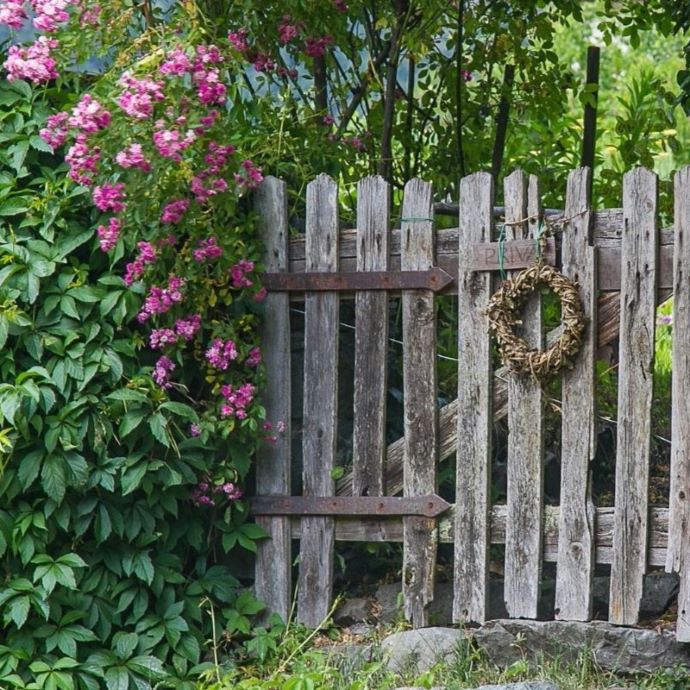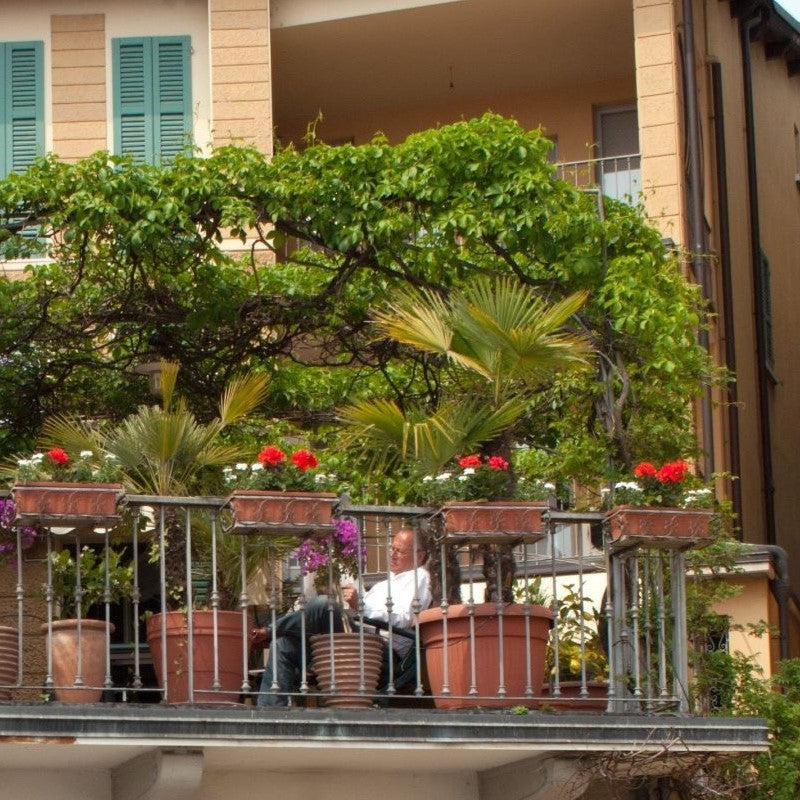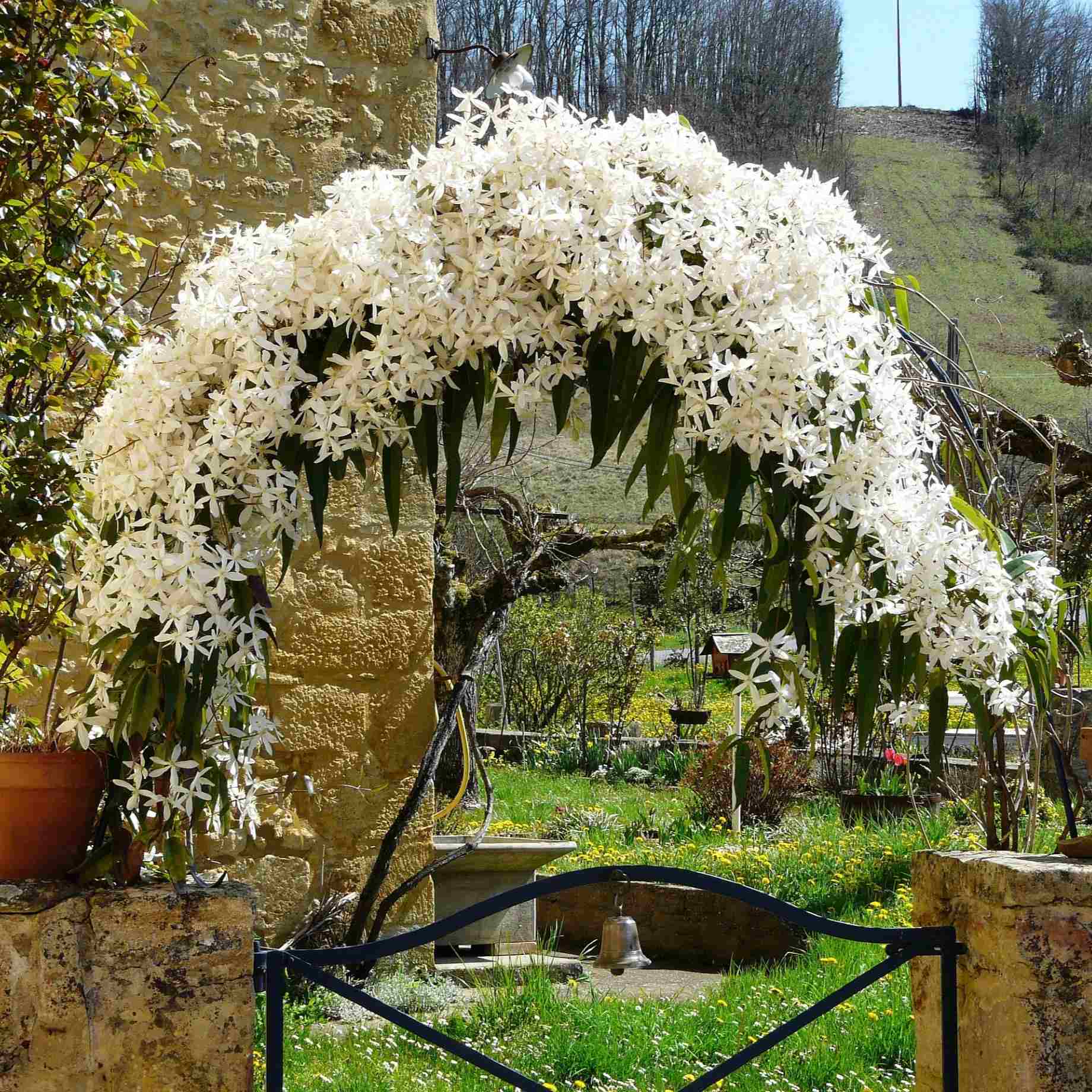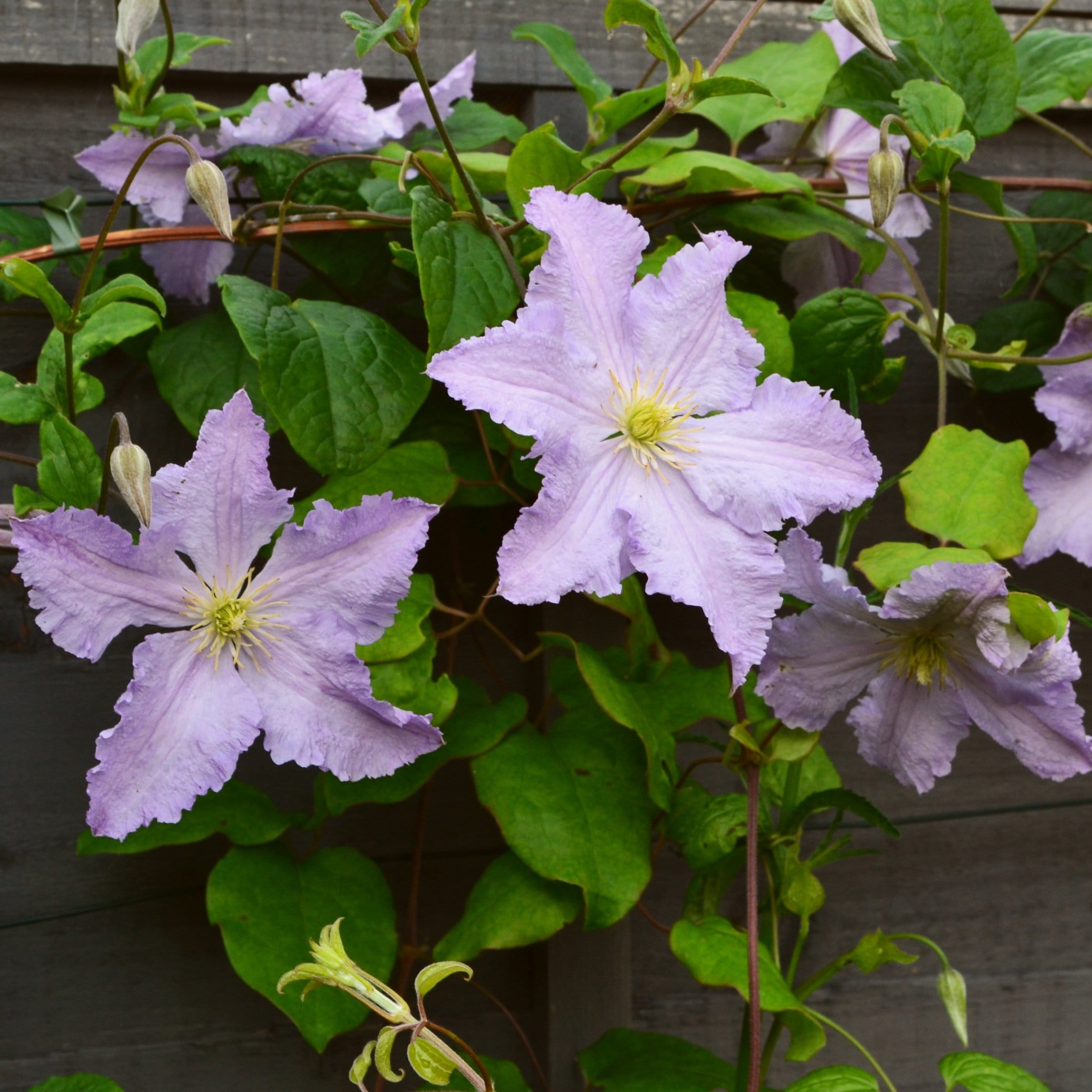Advice & Inspiration
Clematis Pruning Guide & Groups Explained
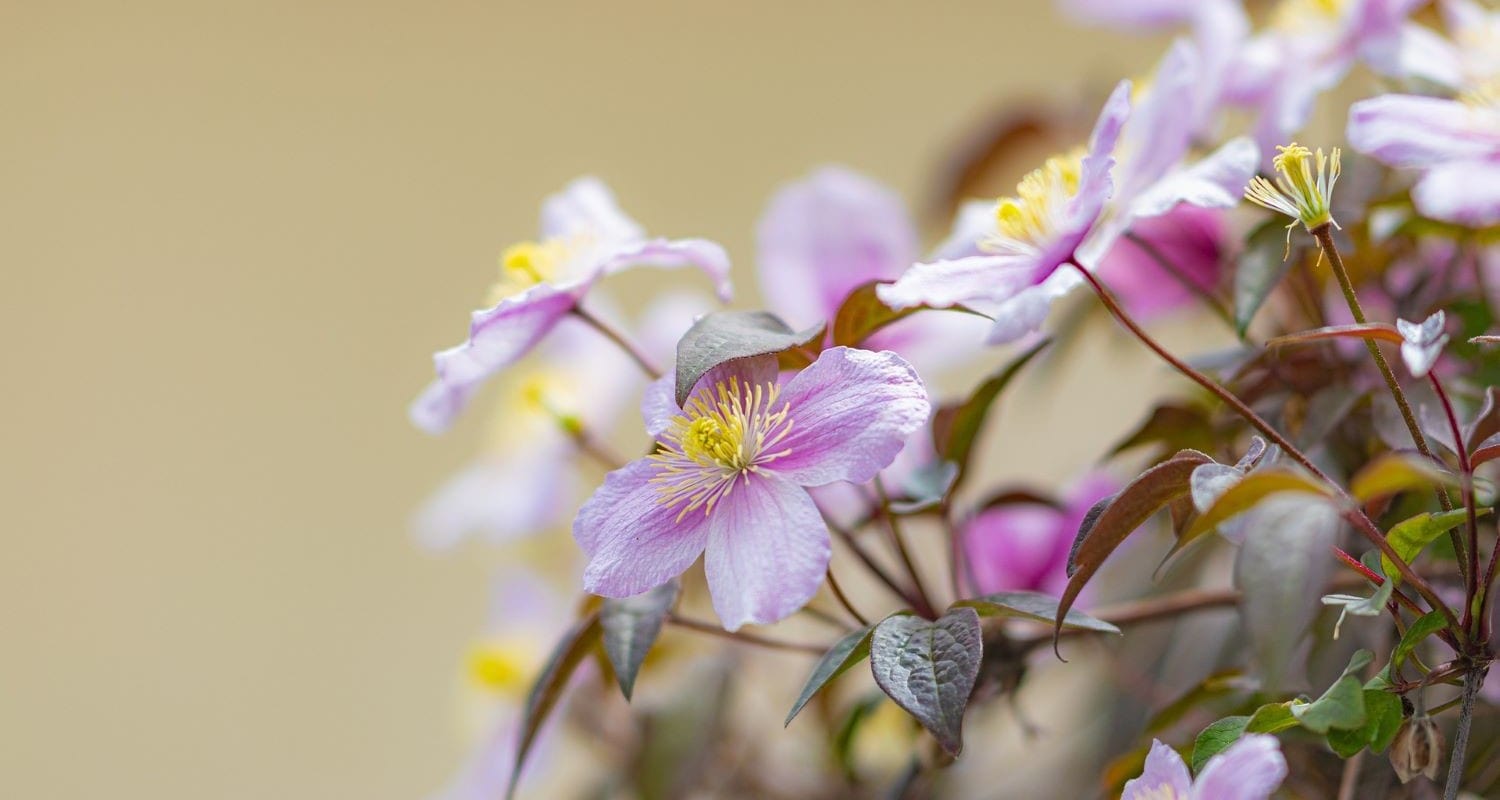
Few climbers boast quite the level of impact that clematises do. With their showy, sometimes scented flowers and rich green foliage, the not-so-humble clematis undoubtedly deserves a starring role in any garden. But what about when it comes to pruning clematises? Nobody likes pruning (if you say you do, you’re lying) but it’s an important part of keeping your clematis nice and healthy (unless it falls into a particular category, spoiler).
In this post, we’ll be looking at how to prune clematises, which clematises require the most pruning as well as some general tips and tricks. First, though, what are clematis pruning groups?
Jump to:
What are clematis pruning groups?
You may have seen clematis pruning groups 1, 2 or 3 mentioned when buying clematises online and wondered what the big deal was? Well, knowing the right pruning group for your clematis can mean the difference between a dead-looking mess and a plant which flowers happily for years and years. The pruning group a clematis falls under depends on the time of year at which the plant flowers.
Group 1 (winter and early spring flowering)
These clematises typically flower in either winter or early spring, producing flowers on the previous year’s growth. This group includes early and evergreen varieties, like Clematis cirrhosa ‘Freckles’ and Clematis armandii, as well as Clematis montana and Clematis alpina varieties.
How and when to prune
Don’t! Seriously, these plants need little to no pruning, making them ideal for busy gardeners. The only times your clematis may need pruning is if it becomes too unwieldy or large for its allotted space, or during the first spring after planting, where a hard prune can promote more stems to grow.

Group 2 (early summer flowering)
Clematises in this group tend to flower at the start of summer, again flowering on shoots from the previous year. Their flowers are typically large, with varieties in this group including ‘Niobe’, ‘Nelly Moser’ and ‘Diamantina’. Group 2 clematises can also have a second flush of flowers later in the year if you give your plant an additional prune after the first flush of blooms.
How and when to prune
Lightly, in February. Remove weak or damaged stems to allow for fresh growth and trim the rest of the stems back to just above the highest pair of buds. Don’t go too crazy, or it won’t flower at all that year. For your second flower flush, trim back some of the plant’s stems to large, healthy buds below the initial flowers.

Group 3 (late summer and autumn flowering)
The final clematis pruning group features plants that flower on the current season’s growth. These clematises usually bloom between late July and early October and include plants such as ‘Warsaw Nike’, ‘Cezanne’ and Clematis viticella varieties.
How and when to prune
Hard! Do it in early spring before the new growth starts. Cut back your clematis to just above a bud, about 30cm from the soil. Seems drastic, but if you don’t, you’ll end up with a mess of dead stems with a few flowers at the top. Not a good look.

Clematis pruning tips
When you prune your clematis, make sure to use clean, sharp secateurs (which have preferably been sterilised beforehand to reduce the risk of any diseases spreading). Furthermore, you should always cut to just above a (healthy) bud, and do so at a slightly downwards angle. This helps prevent dieback and encourages water to run off the cut wound, which mitigates against fungal disease.
When tying in your clematis stems to your support – be that a fence, trellis, pergola or obelisk – be sure to use soft, supple ties (such as twine or foam twist ties) so as to avoid damaging the stems in any way. Even for group 1 clematises, which don’t typically need pruning, it’s important that you remove any dead, damaged or diseased stems as and when they appear. After any pruning, give your clematis(es) a good feed with general-purpose fertiliser or a clematis-specific option (such as that which Vitax offers).
Final thoughts
Hopefully this has cleared up the topic of clematis pruning for you. We’ve also previously written about which variety of clematis is right for your garden, so make sure you check that out, too! And don’t worry if you’ve only got a small patio space available to you, we’ve got a guide on climbing plants for pots as well.








